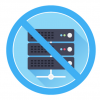 |
The Future of Agile Is Digital Agile software development is no longer about a better way to develop software. Agile is about changing the way digital technologies, products, and services are created to take advantage of enhanced CPU power and the tools that power has made possible. Here's how digitalization is reshaping agile teams, projects, and the very definition of success. |
|
 |
The Pros and Cons of a Serverless DevOps Solution The dream of any product owner is fully customizable production software without the expense of the hardware it rests upon. While not completely free of infrastructure, serverless infrastructure significantly reduces overhead costs by abstracting away physical hosting, physical security, server maintenance, and OS patching. Here's what you need to know to decide if serverless infrastructure is right for you. |
|
 |
What's in a Name? Build Better Software by Naming Classes and Methods Clearly One of the most important things to pay attention to when writing software is how we name our symbols. Data and behavior should be named in a way that represents the essence of what we're trying to do. Naming affects understandability and reflects code quality, so use names that clearly communicate your intentions, and refactor those names when your intentions change. |
|
 |
Living the Agile Principles: Customer Value The first principle of the Agile Manifesto states, "Our highest priority is to satisfy the customer through early and continuous delivery of valuable software." Early and frequent delivery gets value to customers quickly and helps you figure out whether you understand what your customers really want. Here are five tips for how you can follow the first agile principle and provide customer value continuously. |
|
 |
Rowing in the Same Direction: Use Value Streams to Align Work Ambiguity abounds about value streams, so it’s good to clarify what they are, why they matter, and how to exploit them. It's important to help employees understand the organization's definition of value, to provide visibility on how business value is created, and to focus on the fast flow of value through the value streams. If everyone understands which direction to row the boat, they can steer toward it together. |
|
 |
Why You Need to Be Doing Continuous Integration It’s usually easy and inexpensive to set up a continuous integration environment for either an agile or a waterfall project. Perhaps the most obvious benefit of CI is the elimination of the integration phase that existed in traditional waterfall projects, where we typically slip the worst on deadlines. But there are many other benefits to continuous integration that you may not have considered. |
|
 |
5 Tips for Getting Retrospectives Done Right Unfortunately, many retrospectives are not productive. It may be that the discussions are unfocused, not enough data was gathered to be helpful for analysis, or the team concentrates too much on issues they can’t control. Retrospectives should be a key part of an agile process for helping the team improve. Here are five tips that will help you have more valuable retrospectives. |
|
 |
To Kick-Start Your Agile Project, Begin with a Minimum Viable Team You've heard of a minimum viable product, which has only enough features to create a working model and provide feedback for further development. If you want to get started on a new project quickly, Allan Kelly suggests assembling a minimum viable team—only a few people, with only the necessary skills. They begin work right away, with a small budget and tight feedback loops, driving down risk. |
|
 |
Agile Trends to Watch in 2018 With 2018 well underway, it seems like a good time to look ahead and think about what we hope to accomplish this year. Find out which agile trends these software experts are most looking forward to in the coming months. |
|
 |
You’re Ready for DevOps—but Is Your Workplace? In order to adopt DevOps, organizations need to be able to embrace the openness it requires, encourage experimentation and innovation, and work across departmental silos. You may be ready to encourage collaboration and communication to reap the benefits, but what if your company culture isn't? Here's how you can influence your organizational dynamics to lay the groundwork for DevOps. |
Pages
Upcoming Events
| Jun 02 |
AI Con USA Bridging Minds and Machines |
| Sep 22 |
STARWEST Software Testing Conference in Anaheim & Online |
| Oct 13 |
Agile + DevOps USA The Conference for Agile and DevOps Professionals |










